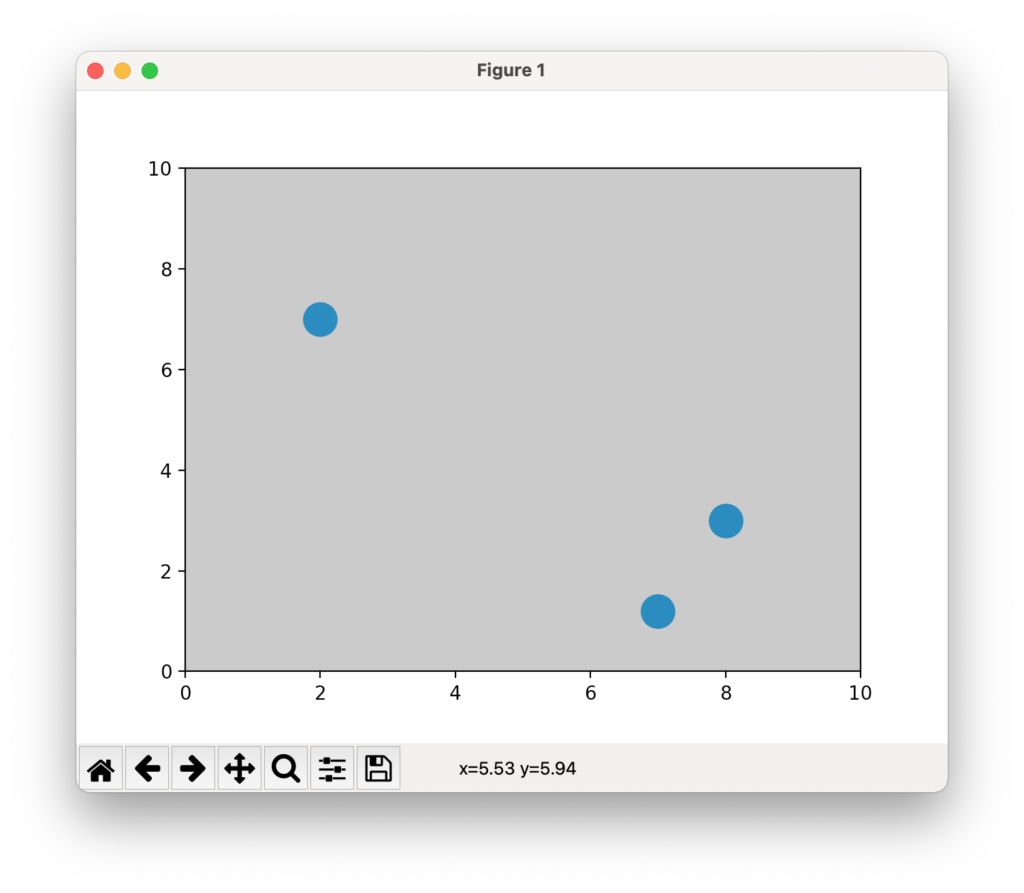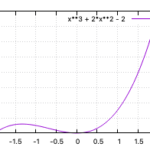次のように、axes で facecolor を変更すればよい。
例
from matplotlib import pyplot as plt
x = [2,7,8]
y = [7,1.2,3]
fig, ax = plt.subplots()
size = 300
ax.scatter(x,y,size)
ax.set_xlim([0,10])
ax.set_ylim([0,10])
ax.set_facecolor('silver')
plt.show()結果

雑記
投稿日:
次のように、axes で facecolor を変更すればよい。
from matplotlib import pyplot as plt
x = [2,7,8]
y = [7,1.2,3]
fig, ax = plt.subplots()
size = 300
ax.scatter(x,y,size)
ax.set_xlim([0,10])
ax.set_ylim([0,10])
ax.set_facecolor('silver')
plt.show()
執筆者:seyanen
関連記事

python3 で、dictionary のキー一覧を取得する方法
dict.keys() でキーを取得することができる。 参考:dictionary の値一覧を取得するときは、dict.values() を使う。 例 print(dict.keys())

python3 で、csv ファイルを読み込んで条件をみたす行の内容を表示する方法
csv.reader で読み込み、各行を読み込んで判定する。 例 import csv with open(‘data.csv’, ‘r’) as csv_file: reader = csv.rea …

pyplt.scatter を使って散布グラフを描くことができる。 点の色は、点ごとに変えることができる。 下の例では color の配列で点の色を指定している。 例 from matplotlib …

2023/01/18
matplotlib のグラフ作成と gnuplot との対応 比較

2022/10/14
pythonで配列(リスト)の、ある要素がわかっているときにその次の要素を取得する方法。